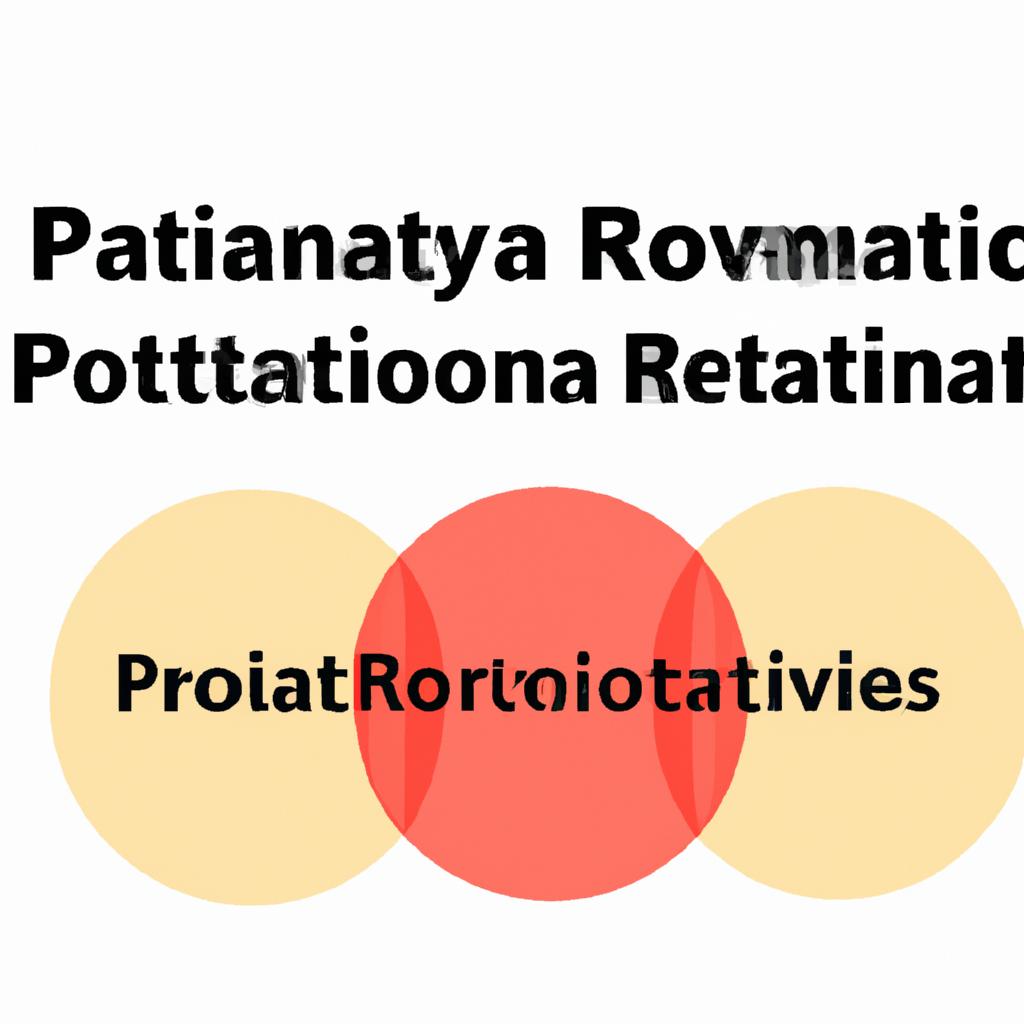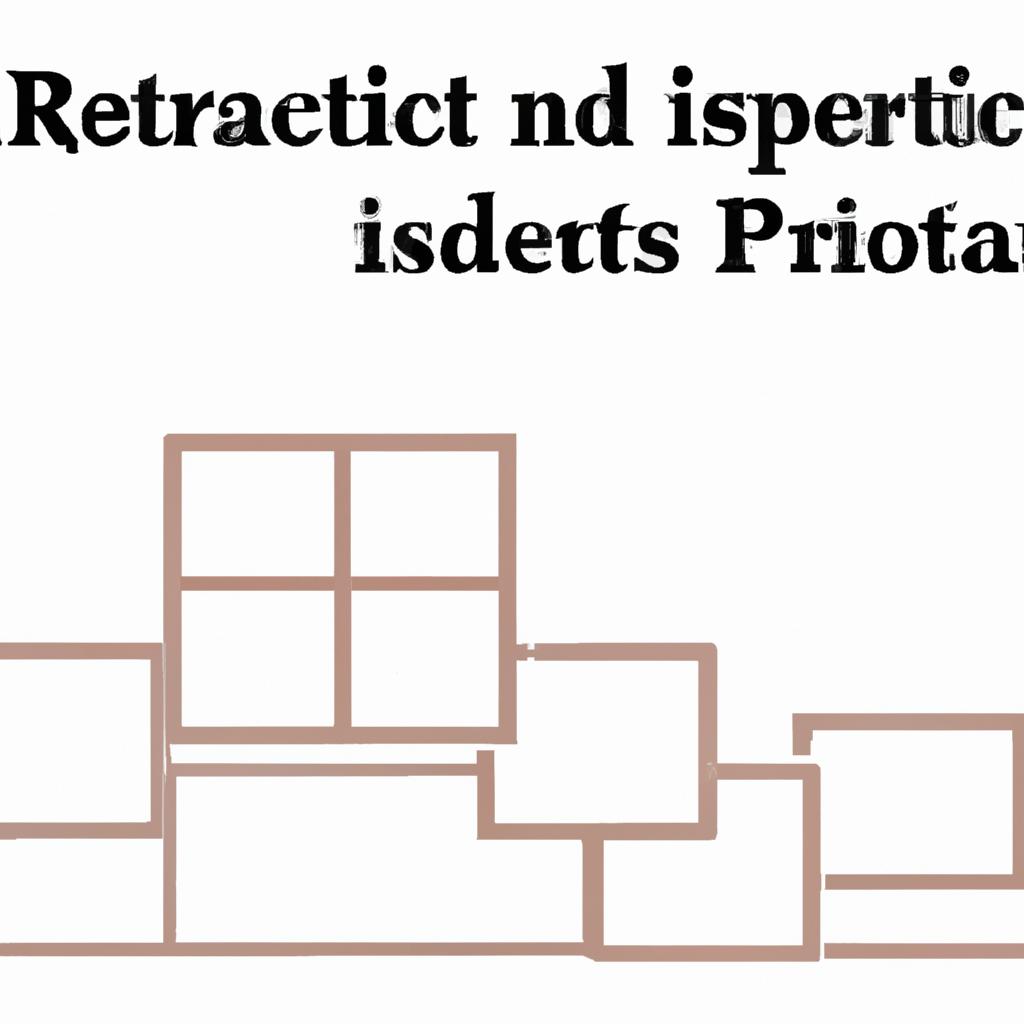In the intricate realm of estate planning, the terms “per stirpes” and “pro rata” hold significant importance in determining the distribution of assets among beneficiaries. At Morgan Legal Group in New York City, we understand the complexities of these legal concepts and their implications on the testamentary intentions of individuals. In this article, we delve into the differences between per stirpes and pro rata, shedding light on the nuances that can shape the outcome of estate plans and trusts. Join us as we navigate through the intricacies of these terms and their impact on the distribution of assets in the realm of estate law.
Understanding the Key Differences Between Per Stirpes and Pro Rata Distribution
In estate planning, it is crucial to understand the key differences between per stirpes and pro rata distribution to ensure your assets are distributed according to your wishes. Per stirpes distribution involves passing on assets to descendants equally, regardless of whether they are living or deceased. In this method, each branch of the family receives an equal share, meaning grandchildren would receive their deceased parent’s share.
On the other hand, pro rata distribution clause”>pro rata distribution divides assets based on percentages, ensuring that each beneficiary receives a predetermined fraction of the estate. This method is often used when distributing assets among beneficiaries who do not have equal claims to the estate. Understanding the nuances of these distribution methods can help you make informed decisions when creating your estate plan.

Implications of Choosing Per Stirpes Distribution in Estate Planning
When it comes to estate planning, the decision between choosing per stirpes distribution or pro rata distribution can have significant implications on how assets are distributed among beneficiaries. Per stirpes distribution, also known as “by representation,” divides assets among the surviving descendants of a deceased beneficiary, ensuring that each branch of the family receives an equal share. This method is particularly useful in cases where beneficiaries from different generations are involved, as it allows for a fair distribution of assets regardless of the number of beneficiaries in each branch.
On the other hand, pro rata distribution divides assets equally among all beneficiaries, regardless of their relationship to the deceased. While this method may seem more straightforward, it can lead to unequal distribution among family members, especially if some beneficiaries predecease the decedent. Ultimately, the decision between per stirpes and pro rata distribution will depend on your specific family dynamics and estate planning goals.

The Advantages of Utilizing a Pro Rata Approach in Allocating Assets
When it comes to allocating assets in estate planning, utilizing a pro rata approach offers several advantages over other methods. One of the main benefits is that it ensures a fair distribution of assets among beneficiaries based on their respective shares. By using a pro rata approach, each beneficiary receives a portion of the estate proportionate to their designated share, thus avoiding any potential disputes or discrepancies.
Furthermore, a pro rata approach can simplify the allocation process and make it easier to manage and administer the estate. This method allows for a clear and transparent distribution of assets, making it easier for executors to fulfill their duties and ensure that the decedent’s wishes are carried out effectively. Overall, utilizing a pro rata approach in asset allocation can help streamline the estate planning process and ensure a smooth transition of wealth to future generations.

Important Considerations When Deciding Between Per Stirpes and Pro Rata Distributions
When deciding between per stirpes and pro rata distributions in estate planning, it is crucial to consider the unique circumstances of each situation. Per stirpes distributions allocate assets among a deceased beneficiary’s descendants, while pro rata distributions divide assets equally among all beneficiaries. Understanding the implications of each option is essential to ensure that your wishes are carried out accurately.
Factors to consider when choosing between per stirpes and pro rata distributions include family dynamics, the number of beneficiaries, and specific preferences regarding asset distribution. Consulting with an experienced estate planning attorney can help you navigate these complexities and make informed decisions that align with your goals. At Morgan Legal Group in New York City, our team of professionals is dedicated to providing comprehensive estate planning services tailored to meet your individual needs and circumstances.
Q&A
Q: What is the difference between per stirpes and pro rata distribution?
A: Per stirpes distribution follows a bloodline, while pro rata distribution divides assets equally among beneficiaries regardless of their relation.
Q: When would one choose per stirpes over pro rata distribution?
A: Per stirpes is commonly used to ensure assets pass down to descendants, even if a direct beneficiary has passed away.
Q: How does pro rata distribution work in practice?
A: Pro rata distribution involves dividing assets based on the number of beneficiaries, ensuring each receives an equal share.
Q: Are there any potential drawbacks to each method?
A: Per stirpes may result in unequal distribution among different branches of a family, while pro rata may not account for varying needs or relationships among beneficiaries.
Q: Can a combination of both methods be used in estate planning?
A: Yes, some individuals choose to use a combination of per stirpes and pro rata distribution to tailor their estate planning to specific family dynamics and goals.
Closing Remarks
In conclusion, the decision between per stirpes and pro rata distribution methods ultimately lies in understanding the unique dynamics and preferences of your own family. While per stirpes ensures equality within each branch of the family tree, pro rata allows for flexibility and customization based on individual circumstances. Whichever method you choose, it’s important to consult with a legal expert to ensure your wishes are carried out effectively. Ultimately, the most important thing is creating a plan that best reflects your values and priorities for the future of your loved ones.
 Per Stirpes vs Pro Rata: Understanding the Difference and How It Affects Your Inheritance
Per Stirpes vs Pro Rata: Understanding the Difference and How It Affects Your Inheritance
When it comes to estate planning, there are various legal terms and concepts that can be confusing and overwhelming for many individuals. Two terms that are commonly used are “per stirpes” and “pro rata”. These terms refer to different methods of distributing assets and can have a significant impact on inheritance. In this article, we will delve into the differences between per stirpes vs pro rata and how they affect the transfer of assets after someone’s passing.
Understanding Per Stirpes
Per stirpes (pronounced per-STIR-peez) is a Latin term that translates to “by roots” or “by branch”. In estate planning, it refers to a method of distributing assets among different generations of a family. It is typically used when the beneficiaries of an estate are not alive or not able to inherit the assets. Per stirpes distribution ensures that the assets are passed down to the next generation in a fair and organized manner.
Under the per stirpes method, each branch or line of the family receives an equal share of the assets. For example, if the main beneficiary of an estate is a parent and they have three children, but one of the children has passed away, the assets will be divided equally among the remaining two children. The portion that would have gone to the deceased child will then be divided equally among their children (the deceased child’s children). This ensures that each branch of the family receives an equal share of the inheritance.
Understanding Pro Rata
Pro rata (pronounced proh RAH-tah) is a Latin term that translates to “in proportion”. In estate planning, it refers to a method of distributing assets among beneficiaries by percentage, based on their relationship to the deceased. Unlike per stirpes, pro rata distribution does not consider branches or lines of the family, but rather the individual’s relationship to the deceased.
For example, if the main beneficiary of an estate is a parent and they have three children, but one of the children has passed away, the remaining two children will each receive 50% of the assets, regardless of whether they have children of their own. The portion that would have gone to the deceased child will not be inherited by their children, as it would be in a per stirpes distribution. Instead, it will be divided equally among the remaining living beneficiaries.
Key Differences Between Per Stirpes and Pro Rata
Now that we have a clear understanding of what per stirpes and pro rata mean, let’s look at the key differences between the two methods of distribution.
1. Inheritance by Branch vs Inheritance by Percentage
As discussed earlier, the main difference between per stirpes and pro rata is how the assets are divided among beneficiaries. Per stirpes distributes assets by branch or line of the family, while pro rata distributes them by percentage based on the individual’s relationship to the deceased.
2. Impact on Future Generations
Another significant difference between the two is the impact it has on future generations. Per stirpes ensures that each branch of the family receives an equal share of the inheritance, thus allowing the assets to be passed down to the next generation. In contrast, pro rata only considers the individual’s relationship to the deceased. This means that if a child passes away, their portion of the inheritance will not be inherited by their children in a pro rata distribution.
3. Complexity of Distribution
Per stirpes distribution can be more complex and time-consuming compared to pro rata. This is because per stirpes requires the assets to be passed down to multiple generations, while pro rata distributes them solely among the living beneficiaries.
4. Tax Implications
The method of distribution used can also have tax implications for the beneficiaries. In a per stirpes distribution, if the assets are passed down to future generations, they may be subject to inheritance or estate taxes. However, in a pro rata distribution, the assets are only taxed once, at the time of distribution to the living beneficiaries.
Which Method is Better?
The decision between per stirpes and pro rata ultimately depends on your individual circumstances and goals for your estate. Both methods have their own advantages and disadvantages. For example, if you have a large, complex family structure, per stirpes may be a more practical option. On the other hand, if you want your assets to be passed down to your immediate heirs, pro rata may be the better choice. It is essential to consult with a professional estate planner to determine which method is best suited for your specific situation.
Benefits and Practical Tips for Estate Planning
Whether you opt for per stirpes or pro rata, estate planning has several benefits and practical tips that can help make the process smoother and more effective.
– Plan for the unexpected: No one likes to think about their own mortality, but it is crucial to plan for the unexpected. Estate planning allows you to have control over how your assets will be distributed after your passing, giving you peace of mind.
– Regularly review and update your plan: Estate planning is not a one-time event. As your family structure and financial situation change, it is essential to review and update your plan accordingly to ensure your assets are distributed according to your wishes.
– Seek professional advice: Estate planning can be a complex process, and it is crucial to seek professional advice to ensure your assets are protected and distributed correctly. An experienced estate planner can guide you through the process and provide valuable insights to make informed decisions.
In Conclusion
Per stirpes and pro rata are two important methods of distributing assets in estate planning. While they both have their own merits, each has a significant impact on how your assets are inherited by your loved ones. It is essential to understand the differences between the two and seek professional advice to determine which method best suits your individual circumstances. By properly planning and executing your estate plan, you can ensure that your assets are distributed according to your wishes and provide for your loved ones in the future.







